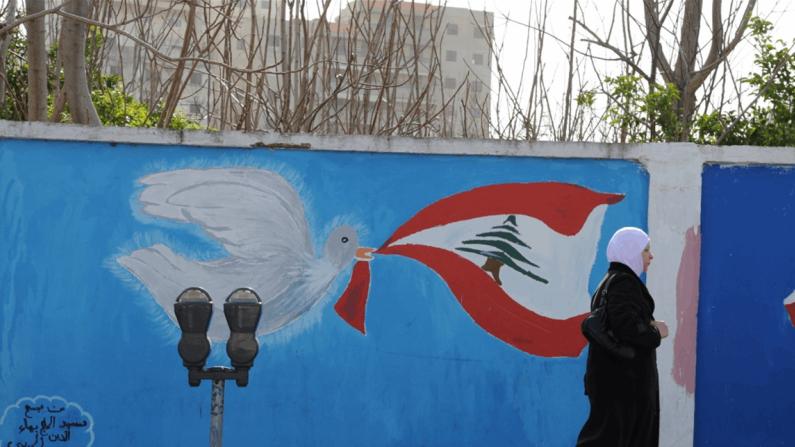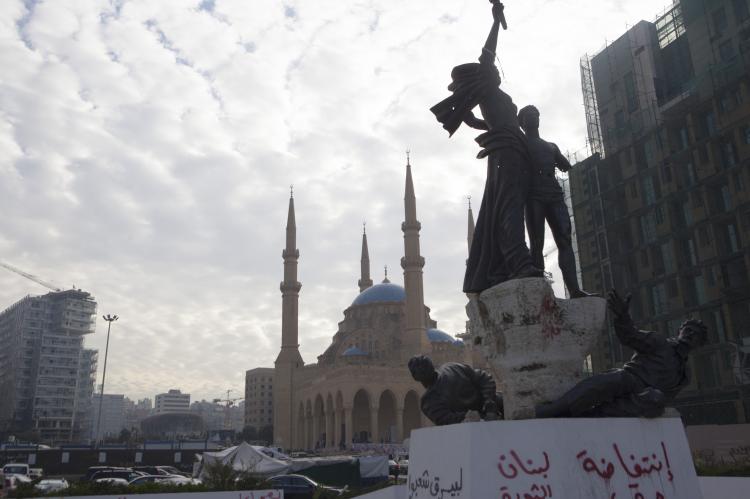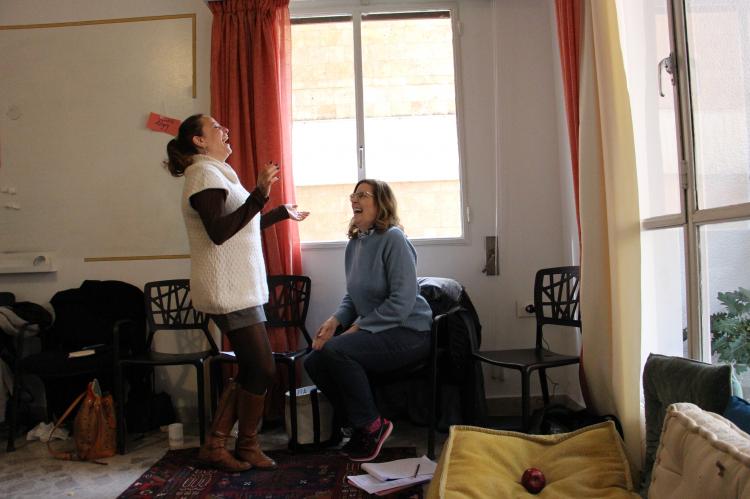
Experiencing violence – particularly over a longer period of time – can traumatise individuals and entire communities. Big parts of the world’s population are affected by prolonged atrocities. How collective trauma affects individuals that experience it as a social and shared reality is to be explored in this article. A traumatic situation can be described as a life-threatening event that exceeds people’s initial capacity to cope with it. In the long-run, feelings of helplessness and insecurity might destroy people’s belief in the self and the other (Fisher, 2000). If entire communities experience trauma, they can subsequently suffer from shared feelings of mistrust and fear; alongside rigid mind-sets and narratives of victimhood (König & Reimann, 2018). Moreover, widespread taboos can lead to the silencing of guilt and shame for decades in those communities.
Also, on a physiological level, trauma causes substantial effects: Symptoms of hyper-arousal, like being easily startled and irritable, anger, agitation, panic or the difficulty to sleep or concentrate are linked to the high amount of stress experienced during and after the traumatic event. It is only recently that experts discovered that the attempt of numbing these symptoms can be passed on from one generation to the next (Yehuda and Lehrner, 2018). Psychic numbing is a tendency of individuals or societies to withdraw attention from past traumatic experiences. The repercussions of engaging in psychic numbing is that people reduce interaction with the external world, may lose interest in activity, detach from others, hide from the outside world and escape from reality. At the same time people might develop the belief that one’s efforts will not lead to any improvement of the situation.
All this enhances the difficulty to engage emotionally with and thus accept a traumatic memory, which hinders the process of recovery (Feeny et al., 2000). Both hyper-arousal and numbing are harmful in the long-run and can further reinforce conflict dynamics on the individual and societal levels.
Trauma helps people to psychologically cope with memories by, for example, distorting memory of the event. A recurring feature among communities affected by war is confusion with the sequence of historical events. Individuals suppress that one’s own group was involved in war crimes and instead associate attacks as defensive or reactionary acts. In the Lebanese context a state-sponsored amnesia is present: Lebanese history schoolbooks only cover events until the independence from France. Later developments, including the Civil War from 1975 to 1990 are not included in the curriculum despite the engagement of Civil Society groups. For more detailed information on this issue please see our Dealing with the Past One Pager.
Beyond that, affected individuals often switch between over- and under-stimulation, in the sense of hyper-arousal or numbness. This can either mean aggression or nervousness when exposed to the trigger; and avoidance, apathy or passivity to not get re-exposed. In human interactions and relationships this is often reflected in either idealisation or strong criticism and rejection. Behind this pendulum stands a vicious circle. While trying to avoid specific triggers that might threaten one’s mental fragmentation, one becomes more vulnerable to be negatively confronted with triggers, since long-term avoidance often does not work.
This notion becomes even stronger, considering sequential traumatisation, which describes how episodes or sequences of several, sometimes unconsciously processed (micro-) aggressions lead to an accumulation of traumatic experiences over a prolonged time (e.g. Carter, 2007; Sue, 2007; Kilomba, 2008). In the Lebanese context, sequential traumatisation is the reality of many Palestinian and Syrian refugees who experience constant neglect of their rights by authorities and the majority Lebanese society. But also, for majority Lebanese sectarian politics and the persistence of sectarian borders might create a steady stress in life.
However, affected communities also exhibit resources for resilience that peace work can build on in order to break reinforcing trauma chains. Important resilience-strengthening factors can be strong relational ties with family and friends; or a sense of self-efficacy by being active and openly engaging with the community. In our project “Future Together Now” women themselves get active in a self-organised community centre they themselves perceive as a safe haven. By engaging in collective actions, they regain a sense of self-efficacy and autonomy. All this can be seen as examples of resilience and is in sharp contrast to feelings of helplessness and mere reaction to the environment.
Collective and Transgenerational Trauma
So how does collective trauma relate to individual trauma? Collective trauma is a “not yet completely accomplished process of learning how to deal with and integrate extreme levels of stress, impacting the social dynamics, processes, structure and functioning of a collective” (Reimann & König, 2017). It may lead to people being stuck in conflict dynamics and committing different forms of violence against themselves and others. Collective trauma is to be distinguished from trauma of a large group of individuals that are affected on an individual level. Only when there are certain trauma symptom patterns that are formed by the group and become part of the shared group reality, so-called collective identity markers (see below and König & Reimann, 2018), we refer to it as collective trauma. When such patterns that serve as coping mechanisms are passed on to the next generation through parenting, social or genetic transmission, we allude to ‘transgenerational or intergenerational trauma’ (see Yehuda and Lehrner, 2018).
One example for transgenerational transmission of trauma can be found in German generations after WW II and the Holocaust: While the first generation often copes with the horror by defaming or trivialising the past and overload of guilt, the second generation shows higher levels of shame as well as resilience. This generation was especially exposed to the contradiction of knowing parts of history and at the same time parents who are not telling the truth as well as an upbringing marked by parental neglect during the post-war period (Bar-On, 1989). In contrast, the third generation, not as challenged in their survival, still experiences diffuse insecurity, shame and dominating feelings of loss and despair. Often the third generation starts investigating the pieces of the fragmented family legacy, sometimes with obsession and becomes the key for overcoming the trauma and building peace (e.g. Reddemann, 2015). Also, in Lebanon, now 30 years after the end of the Civil War (1975 – 1990), the post-war generations are ready to question traditions of neglect, sectarian boundaries and persisting speechlessness in families. The recent protests, which started in October 2019, can partly be seen as coping strategy young (and older) Lebanese people apply to overcome trauma dating back to the 20th century. Across sectarian divides people stood up for a transformation of Lebanon’s political and social system.
Collective Trauma can shape identities
König and Reimann (2018) refer to three so called “collective identity markers” that can hinder the full, constructive and non-fragmented integration of the lived stressful experiences:
1) Collective narratives of loss and despair, of guilt and shame, including silencing and taboos, and/or of collective victimhood.
2) Shared feelings dominated by mistrust, insecurity, exaggerated fear and passivity (Becker, 2004).
3) Collective mental models or belief systems that are characterised by rigid thinking, scapegoating, prejudices, stereotypes, exclusive norms and values.
These elements combined with increased stress levels and vulnerability rather promote aggressions, cultures of violence, and polarisation, thus perpetuating conflict dynamics further.
In our work in Lebanon, we have realised at many different points how trauma has shaped the way people see themselves and others in the world. As an example, the women in the “Future Together Now” project also emphasised that the notion of “we are the victims” is part of their shared identity. In a reflection process, they also concluded that in order to overcome resistance to change and adaptation, such beliefs must be identified. Only the understanding of the underlying needs could eventually lead to reduced resistance and sustainable social change. The women opened a self-organised community centre that provides a safe space for women of all nationalities and generations in the northern city of Baalbek. It invites women to find shelter and relief from everyday microaggressions against their gender and to practice self-care. The dialogue supports women from different generations to stimulate a transgenerational healing process.
Implementing trauma-sensitive interventions
Trauma-sensitive work addresses all the elements of collective trauma mentioned in the section above: It addresses critical identity markers to form more inclusive narratives and helps to overcome rigid mind-sets; strengthens resilience of affected communities and promotes healthy coping strategies. This can be done for instance by creating safe spaces within groups (e.g. women groups or community groups) and there by sharing an atmosphere of empathy, in which individual experiences can be processed with the support of the group. Trauma-sensitive group work set-ups do not only work with words or intellectually, but also with the body and with images, for instance identifying issues to be changed in a community with the tool of photo-voice. Considering how strongly collective trauma and its effects can influence our daily work at forumZFD, we are committed to continue to research and develop tools for trauma-sensitivity and to deepen our understanding of cross-generational trauma.
References
Bar-On, Dan (1989). Legacy of Silence: Encounters with Children of the Third Reich. Cambridge: Harvard University Press.
Becker, David (2004). Dealing with the Consequences of Organised Violence in Trauma Work. In: Austin A., Fisher M., Rospers N. (eds) Transforming Ethnopolitical Conflict. The Berghof Handbook: VS Verlag für Sozialwissenschaften, Wiesbaden.
Carter, Robert T. (2007). Racism and Psychological and Emotional Injury: Recognizing and Assessing Race-Based Traumatic Stress. The Counseling Psychologist.
Feeny, Norah C.; Zoellner, Lori A.; Fitzgibbons, Lee A; Eden, B. Foa (2000). Exploring the roles of emotional numbing, depression, and dissociation in PTSD. Journal of Traumatic Stress. 13 (3): 489–497.
Fisher, Simon (2000). Working with Conflict: Skills and Strategies for Action. Birmingham: Zed Books.
Keilson, Hans (2005). Die sequentielle Traumatisierung bei Kindern: Untersuchung zum Schicksal jüdischer Kriegswaisen. Gießen, Psychosozial-Verlag.
Kilomba, Grada (2008). Plantation Memories. Episodes of Everyday Racism. Münster: Unrast Verlag.
König, U. & Reimann, C. (2017): “Collective Trauma Matters Tips for Mediation and Dialog Processes“. Perspektive Mediation. Beiträge zur Konfliktkultur (September 3). https://www.verlagoesterreich.at/media/pdf/blick-ins-heft_pm-3-2017.pdf
Reddemann, Luise (2015). Kriegskinder und Kriegsenkel in der Psychotherapie. Stuttgart: Klett-Cotta.
Reimann, Cordula & König, Ursula (2017). Collective Trauma and Resilience: Key Concepts in Transforming War-related Identities. Berghof Handbook Dialogue Series No. 11.
Reimann, Cordula & König, Ursula (2018). Closing a gap in conflict transformation: Understanding collective and transgenerational trauma. In: https://www.ximpulse.ch/wp-content/uploads/1806CollectiveTrauma.pdf (accessed 10/12/2019).
Yehuda, Rachel & Lehrner, Amy (2018). Intergenerational transmission of trauma effects: putative role of epigenetic mechanisms. World Psychiatry.


